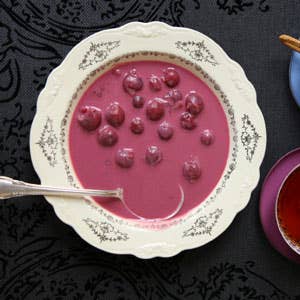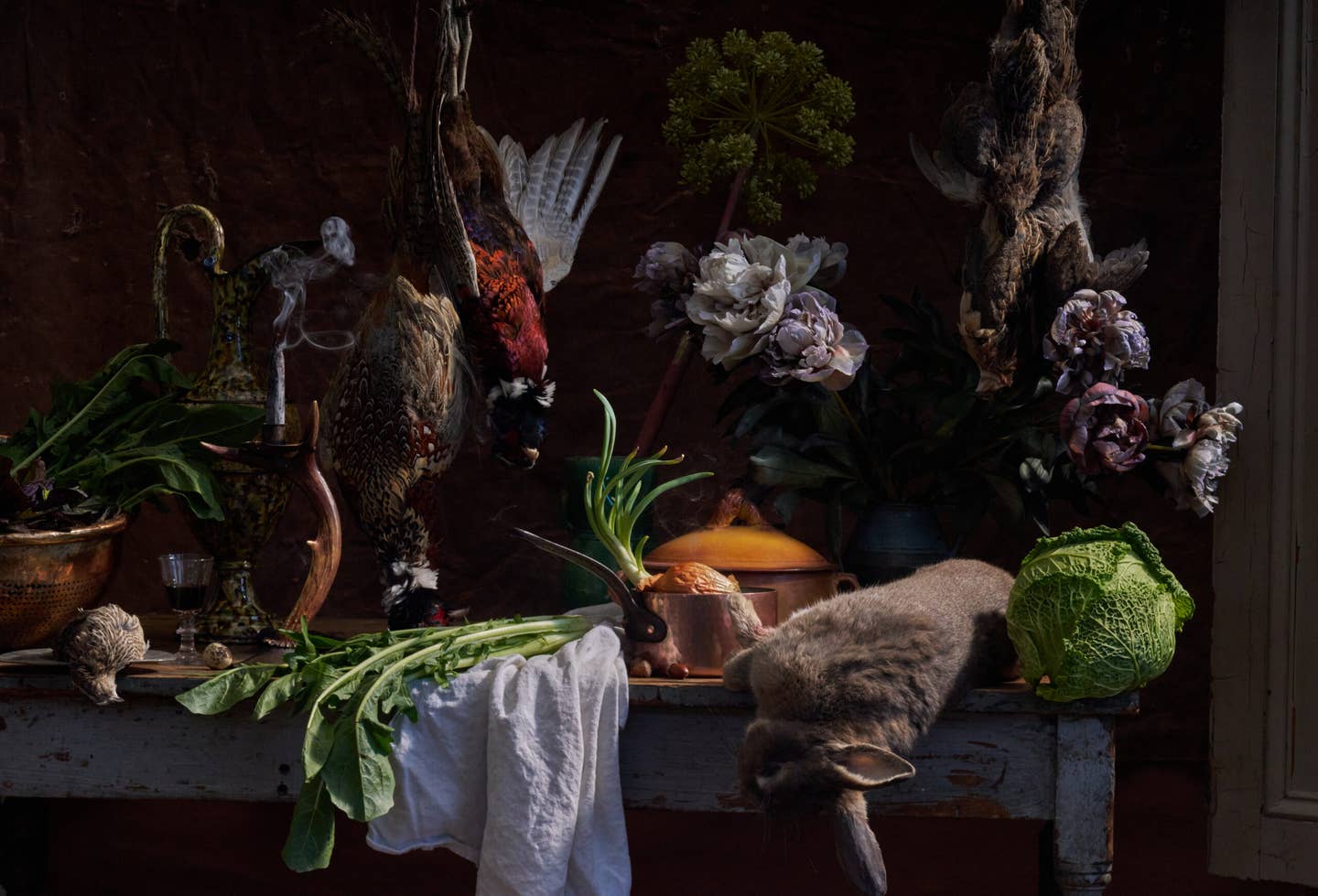
No matter the season, my Hungarian-born grandmother's Bronx apartment always smelled of paprika and chicken fat, the scent of which permeated the upholstery and lingered in the air. Even in the heat of summer, Grandma Rose cooked Hungarian foods that were unapologetically hearty, like stuffed cabbage and rakott krumpli, a buttery potato-egg casserole. One perennial summer favorite broke the pattern, though: meggyleves, cold sour cherry soup.
As a kid, I always looked forward to that dish, which was served as a first course, studded with morello sour cherries and thickened with sour cream. Not only did it seem like a dessert disguised as an appetizer, but Grandma Rose made a game out of eating it: for every pit that my brother and I found in our bowls, she'd reward us with a shiny dime. Occasionally, we'd finish our soup not a dime richer, which meant that Grandma had run out of the handpicked morello cherries that my family would haul home from weekend expeditions to orchards in upstate New York; in those instances, she'd use jarred, pitted Hungarian morellos instead.
The first few times I tried making meggyleves myself, I used sweet bings and rainiers (which are more widely available in most of the U.S. than sour cherries); the result was a sweeter soup. The soups I made with other sour cherry varieties, like the popular montmorency, were delicious but not as complex as I remembered. It quickly became clear to me why Hungarians have long prized the dark red, intensely flavored morello for meggyleves and for traditional strudels, tortes, and preserves. It's so distinctly different from sweet cherries, which are called cseresznye in Hungarian, that it goes by an entirely different name: meggy.
I confess that after amassing a piggybank full of dimes at Grandma's apartment, I began to suspect that she was deliberately planting a few extra unpitted cherries in her soup, but my suspicion has been laid to rest now that I make my own meggyleves each summer. Despite my best efforts, I still find plenty of pits in my bowl.
Keep Reading
Continue to Next Story










